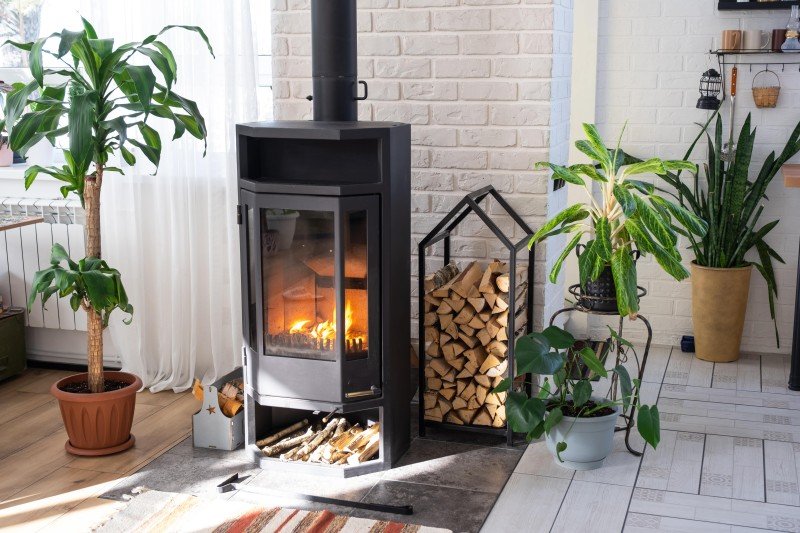The Myths And Facts Behind Fireplace

The Fireplace: A Warm Embrace of Tradition and Comfort
Fireplaces have actually been an important part of human habitation for centuries, acting as a source of heat, a gathering location, and a sign of comfort. While the modern versions might vary extremely from their ancient forefathers, the attraction of a fireplace sustains. This post checks out the various aspects of fireplaces, including their history, function, types, and upkeep, while likewise resolving regularly asked concerns.
The Evolution of Fireplaces
Fireplaces go back to prehistoric times when open flames were utilized for cooking, heating, and protection from wildlife. Over the centuries, fireplaces developed from basic fire pits to the advanced renditions we see today. Here is a short timeline of their evolution:
- Prehistoric Era: Cavemen used open flames for warmth and cooking. Wind and smoke often blew into residences.
- Middle Ages: Stone and brick fireplaces ended up being common in homes and castles, incorporating chimneys to carry smoke outside.
- Renaissance: Elaborately created mantels emerged, and fireplaces became centers of social interaction.
- Industrial Revolution: Innovations in heating materials led to a variety of designs and performances.
- Modern Era: The advent of gas, electric, and bioethanol fireplaces supplied cleaner alternatives to traditional wood-burning systems.
Table 1: The Evolution of Fireplaces
| Period | Attributes |
|---|---|
| Prehistoric Era | Open flames for warmth and cooking |
| Middle Ages | Stone and brick structures with early chimneys |
| Renaissance | Ornate mantels, social centers |
| Industrial Revolution | Diverse designs, development of new materials |
| Modern Era | Gas, electric, and bioethanol choices |
The Purpose of a Fireplace
Fireplaces serve double functions: they supply physical heat and develop a psychological environment. House owners often gather around the fireplace to bond, share stories, and enjoy a cozy setting. The glow of a fire can be relaxing, adding to a sense of relaxation and intimacy. Beyond personal satisfaction, fireplaces likewise provide practical advantages, including:
- Home Heating: Effective heat source, especially in cooler climates.
- Increased Home Value: A well-designed fireplace can enhance the aesthetic value of a home.
- Emergency situation Heating: In case of power blackouts, wood-burning fireplaces can work as a vital heat source.
- Visual Appeal: A centerpiece that contributes to interior decoration.
Kinds of Fireplaces
Today, fireplaces can be found in different styles and fuel types, accommodating a varied series of preferences and settings. Here are some common types:
Wood-Burning Fireplaces:
- Traditional fire pits
- Classic masonry fireplaces
- Require substantial maintenance and chimney maintenance
Gas Fireplaces:
- Available in both direct vent and ventless ranges
- Much easier to use and preserve than wood-burning fireplaces
- Offer instant heat with a flick of a switch
Electric Fireplaces:
- Offer associated heat sources without real flames
- Frequently developed to simulate traditional fireplaces
- Suitable for smaller sized spaces and homes without a chimney
Bioethanol Fireplaces:
- Use bioethanol fuel, offering a sustainable option
- Require no ventilation and can be positioned anywhere
- Safe and easy to maintain
Table 2: Types of Fireplaces
| Type | Fuel Source | Functions | Upkeep Requirements |
|---|---|---|---|
| Wood-Burning | Wood | High atmosphere, heat source | Regular chimney cleaning |
| Gas | Natural gas or propane | Instant heat | Very little, occasional maintenance |
| Electric | Electricity | Easy setup | Extremely low maintenance |
| Bioethanol | Bioethanol fuel | Ventless, portable | Low, mainly cleaning up |
Upkeep and Safety Considerations
Owning a fireplace includes certain duties, specifically regarding its safe operation and long-term maintenance. Here are important maintenance suggestions and security guidelines:
Maintenance Tips:
- Annual Inspection: Always have your chimney and fireplace inspected at least once a year by a certified service technician.
- Routine Cleaning: Clean out ashes and debris after each usage, and guarantee the flue is open before starting a fire.
- Examine for Cracks: Inspect masonry for cracks or damage to prevent structural concerns.
- Usage Proper Fuel: Only use dry, experienced wood for wood-burning fireplaces; do not burn treated wood.
Safety Guidelines:
- Install Smoke Detectors: Ensure smoke alarm are functional, testing them monthly and changing batteries as needed.
- Keep a Fire Extinguisher: Have one close-by, even if a fireplace is utilized occasionally.
- Supervise Flames: Never leave a fire ignored, and ensure kids and pets are kept track of around the fireplace.
Frequently Asked Questions (FAQs)
1. How can I lower smoke from a wood-burning fireplace?
To lessen smoke, use dry, experienced wood, and make sure that your chimney is clean and unblocked.
2. Is it safe to utilize gas fireplaces during a gas leakage?
Never ever use a gas fireplace during a gas leakage. Instantly evacuate the area and contact gas services for assistance.
3. Can I set up an electric fireplace myself?
Electric fireplaces are generally simple to set up, however it is recommended to seek advice from professionals to ensure safety and compliance with local building codes.
4. What is the very best type of fireplace for small areas?
Electric fireplaces or bioethanol designs are typically best for small areas, as they do not need substantial ventilation or structural modifications.
Fireplaces have transcended their initial purpose of offering heat to become valued elements of home design and household life. Cheap Fireplaces UK stimulate memories of warmth, events, and togetherness while offering practical advantages that enhance modern living. By understanding the numerous types of fireplaces, their maintenance, and safety practices, property owners can delight in the classic appeal of this cherished feature for generations to come.

